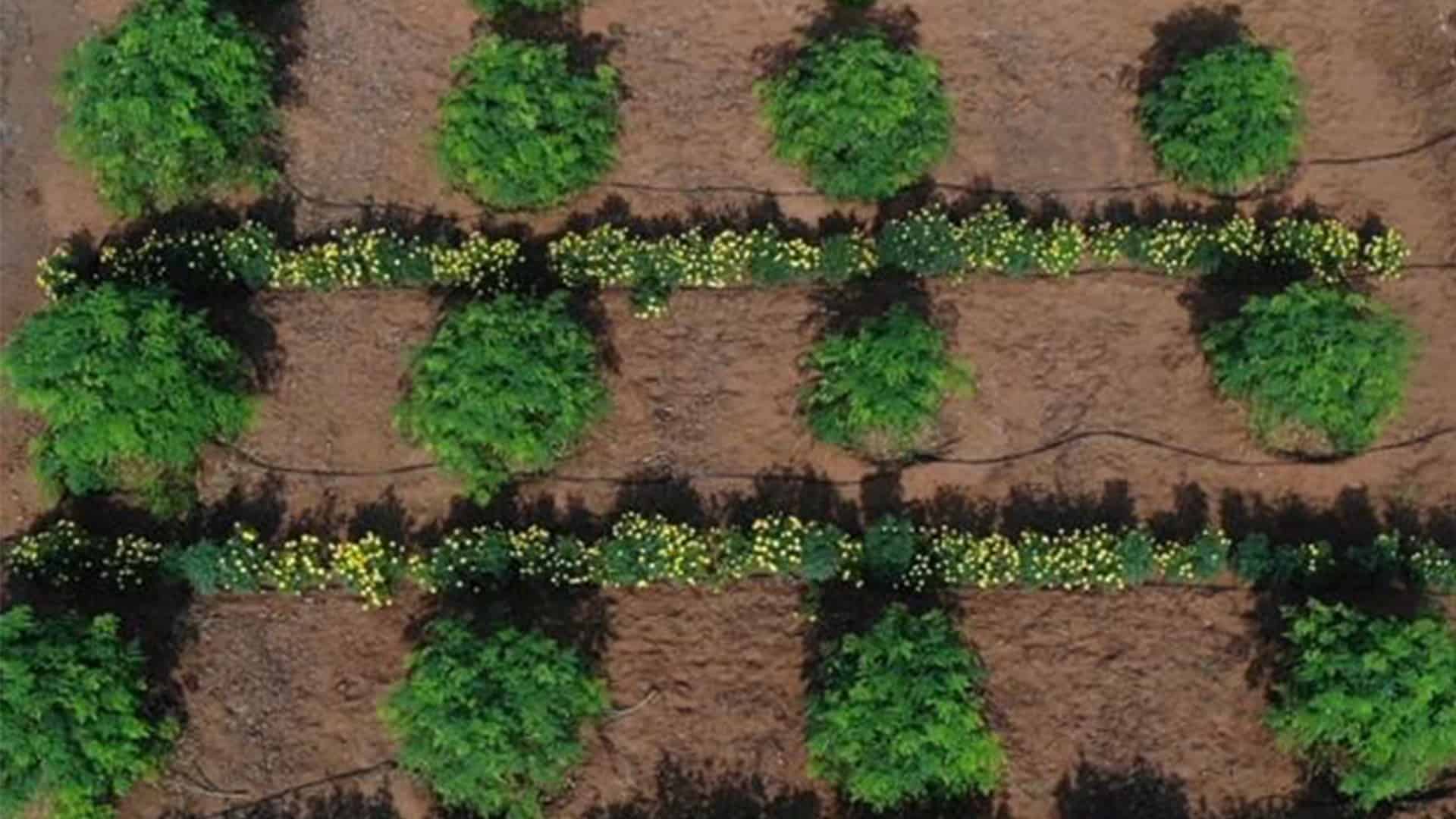Planting flowers next to crops in orchards can help smallholder farmers increase their yield and crop quality, claims a team of researchers from the University of Reading.

The researchers conducted an interesting experiment during which they collaborated with some farmers living in Tamil Nadu, India. Each of the farmers owned a small piece of land on which they grew moringa (Moringa oleifera), a highly nutritious and drought-tolerant crop.
The researchers asked the farmers to grow marigold flowers and red gram crops alongside moringa trees in their orchards. This simple experiment resulted in a staggering increase in harvestable moringa fruit yield.
Moringa, a miraculous superfood
One of the reasons researchers worked with moringa growers is because this lesser-known crop is actually a superfood that has the potential to meet the increasing global food demand amidst climate change.

Whether it is the leaves, flowers, seeds, or drumstick-shaped pods, all parts of the moringa crop are edible and rich in protein, minerals, antioxidants, and vitamins. Plus the crop is fairly drought and disease-resistant.
Due to all these qualities, moringa is often referred to as the “miracle tree.” While explaining the potential of moringa as a superfood, Carrie Waterman, an associate professor at the University of California, Davis, (not involved in the present study) said:
“If there were a top 10 list of plants that are going to help feed the world over the next hundred years, I would say moringa should be on that list.”
The crop is native to South Asia and currently, India is the world’s largest moringa producer. However, some moringa species also grow in parts of Africa and Europe.
Using flowers to boost moringa production
According to the study authors, many farmers in the UK and Europe have already been growing flowers beside their orchard crops for some time.
The flowers attract a great number of pollinating insects. The insects not only visit the blossoms of the flowering plants but also extend their pollination activity to the orchard crop itself. This ends up enhancing pollination, and fertilization, eventually boosting the overall crop yield.
Since moringa flowers also require pollinators such as bees for fertilization, the researchers decided to test whether this technique could also work for smallholder moringa farmers.
They conducted an experiment involving 24 moringa orchards in Tamil Nadu, India. In 12 of these orchards, they helped the farmers grow marigold flowers and red gram alongside their moringa trees. While in the remaining 12 orchards, farmers only cultivated moringa.
The researchers noticed that farms with flowering plants witnessed a 50 percent higher number of pollinating insects than the other moringa farms. Plus, the diversity of pollinating insects was also 33 percent higher in the former.
This increased pollination in the moringa orchards with flowering plants and red gram resulted in a 30 percent higher crop production, compared to the rest of the orchards.
These findings prove that growing flowers alongside orchard crops can work as a sustainable way to drastically increase the crop yield as well as the income of smallholder farmers.
This is really important because most such farmers don’t have access to large farming land, capital, and resources, making them more susceptible to the adversity brought by climate change.
“Greater yields and higher quality fruit will translate to a healthier and better food supply for smallholder communities. The farming communities can also use the red gram as a protein source in their diets and receive extra income from selling the marigold flowers,” Dr. Deepa Senapathi, one of the study authors and Head of the Department of Sustainable Land Management at the University of Reading, said.
The study is published in the Journal of Applied Ecology.


